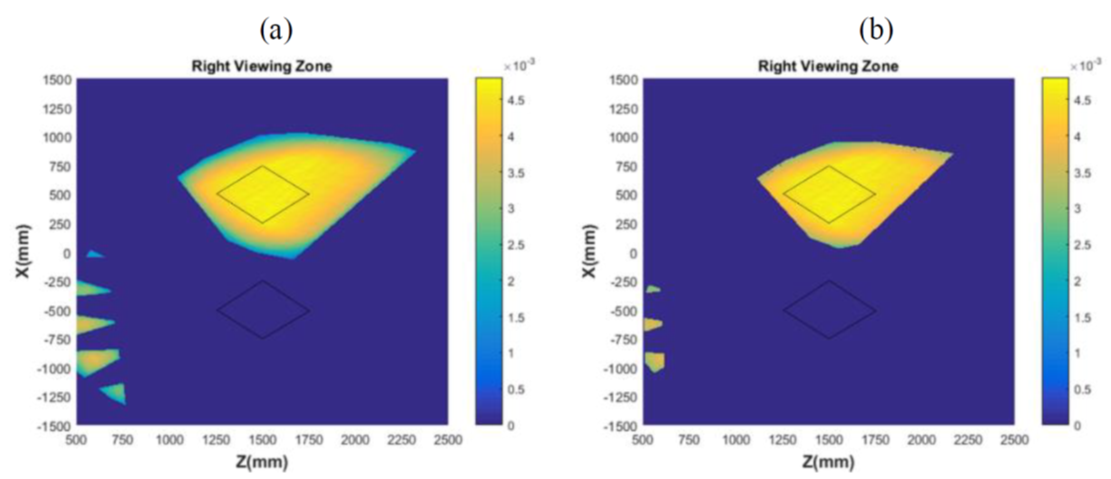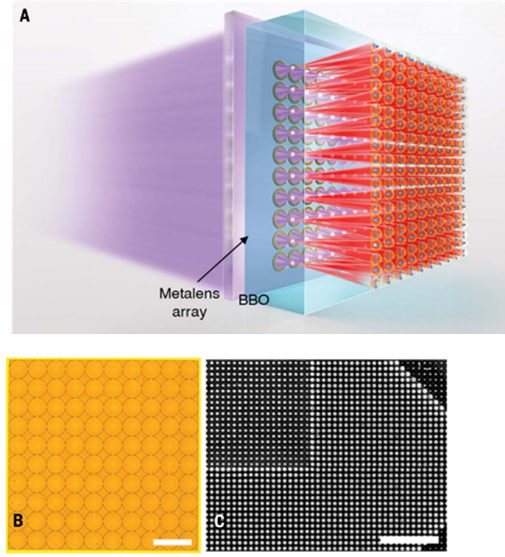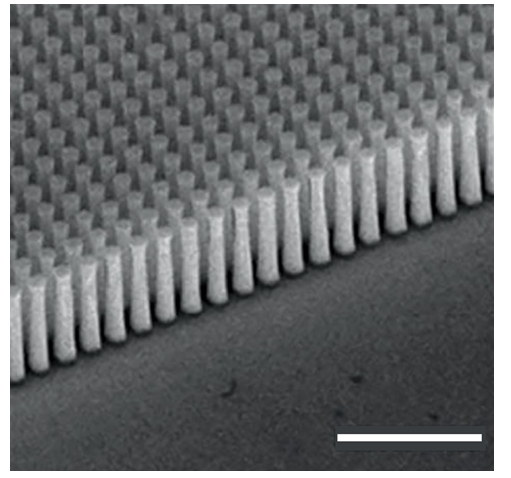 |
|
 |
| |
发行人:黄建璋所长 编辑委员:曾雪峰教授 主编:林筱文 发行日期:2020.10.30 |
| |
|
 |
|

本所林恭如教授指导博士生高士勋同学荣获「OECC 2020会议最佳墙报论文奖」,特此恭贺!
| 获奖学生 |
指导教授 |
论文题目 |
|
光电所
高士勋博士生 |
林恭如教授 |
Power
Envelope Detection of 40-Gbit/s GFDM
Data in Two-color VCSEL Based MMW-Oscillator-Free
5G Network |
 本所吴肇欣教授指导硕士生梁雅婷同学荣获「OECC
2020会议最佳论文奖及最佳现场演讲奖」,特此恭贺!
本所吴肇欣教授指导硕士生梁雅婷同学荣获「OECC
2020会议最佳论文奖及最佳现场演讲奖」,特此恭贺!
| 获奖学生 |
指导教授 |
论文题目 |
|
光电所
梁雅婷硕士生 |
吴肇欣教授 |
Monolithically Integrated Opto-Electrical
NOR Gate Using Light Emitting
Transistors |
|
|
 |
|
 |
|
| |
|
 |
Development of mesoscopic nonlinear imaging system with record-dense sampling capability
Professor Chi-Kuang Sun
Graduate Institute of Photonics and
Optoelectronics, National Taiwan University
台湾大学光电所 孙启光教授
Nonlinear imaging [1] of volumetric biological specimens can reveal its three-dimensional (3D) structural details with ultra-high spatial resolution, in terms of depth-resolved cross-sectional views with a better penetration capability due to the use of near-infrared (NIR) excitation spectrum and excitation localization of nonlinear optical absorption, in comparison to single-photon based imaging modalities. To facilitate high-speed, but aliasing-free laser-scanning of a centimeter-scale volumetric sample, an ultra-large field of view (FOV) is mandatory, which must be digitized with an ultra-fast sampling rate in order to fulfil the Nyquist Criterion, being a fundamental limitation to all the state-of-the-art mesoscopic imaging systems to date [2].
Our group has developed a nonlinear optical mesoscope (NLOM) with an extended FOV of up-to 1.6×1.6 mm2 while preserving a smallest resolvable spacing of 0.48 μm. We further introduced a one-pulse-per-voxel extreme-synchronized-sampling for the first time in an NLOM with a FOV/ resolution ratio over 3000. Our record acquisition system holds the capability of simultaneously sampling 4 channels at up-to 125 MSps sampling-rate, reaching a record single-frame pixel number of 15720×16000 for each of the 4 channels, leading to a total of ~1 Gigapixels per frame, while maintaining ~0.5 fps; including real-time calibration, preview and storage of the acquired data in 16-bit format with 14-bit resolution.
|

|
|
Fig. 1(a) 3D view of coronal sections from medulla of a Nav1.8-tdTomato mouse; (b), (c) zoomed views of ROI R1 in (a). Red, green & cyan axes are X, Y & Z axes, respectively. Scale bars: (a) 0.2 mm, (b) 0.1 mm, (c) 0.05 mm. |
Reference:
1.
W. R. Zipfel, R. M. Williams, W. W. Webb,
Nonlinear magic: multiphoton microscopy in the
biosciences. Nature biotechnology,
21,1369–1377 (2003).
2 .
M.
Balu, H. Mikami, J. Hou, E. O. Potma, B. J.
Tromberg, Rapid mesoscale multiphoton microscopy
of human skin. Biomedical Opt. Express 7,
4375-4387 (2016).
Study on the Design Parameters for Curved-Type Parallax-Barrier Dual-View Display
Professor Hoang-Yan Lin
Graduate Institute of Photonics and
Optoelectronics, National Taiwan University
台湾大学光电所 林晃岩教授
The 3D stereoscopic display makes both eyes to see the left and right image information separately, and recombine them to create stereoscopic vision. The dual-view display distributes the left and right images to each viewing zone, which can be realized through spatial multiplexing methods. The image information can be divided into different position by adding the parallax-barrier or lenticular-lens structures on the display system. The difference between the dual-view and 3D stereoscopic displays is that the viewing position is changed from the distance between both eyes of a person to the double viewing zones which can be designed by yourself. It becomes a technology that can provide at least two users on a single display at the same time. In recent years, the advancement of flexible substrate technology has brought attention to the issue of curved display. Curved displays provide screen-enlarged perception and immersive vision experience.
For the dual-view display, viewing position and the range nearby strongly affect image quality. Viewing zone describes the spatial range in front of the display where a viewer could move around while experiencing the corresponding image information. Regarding a curved dual-view display, radius and viewing angle of the screen determine the relative degrees of bending, by which the spatial light distribution can be determined. In addition, this is a key factor influencing image quality, especially for the display which directs the views for left and right viewing zones based on different image information. By using geometric optics and ray-tracing software, the viewing zone can be calculated and depicted, and discussed as given different curvature radius or viewing angle of the screen with refractive index substrate. Considering crosstalk and uniformity, we present a method to control the viewing zones by shifting parallax barrier in this study.
A curved-type parallax barrier dual-view display was constructed and shown as in
Fig. 1(a). PD and PB are the pitches of the sub-pixel on display and the barrier aperture, respectively. A distance from the display to barrier is defined as f, a distance from barrier to a viewer is defined as
ZDEP, and the dual people distance (DPD) is marked as PE. The geometric relationship is similar to our preview study for 3D stereoscopic displays. First, we take the emitting light rays through the sub-pixel edge to intersect in front of the display. Considering the radius of curvature, the design viewing positions on the left and right must be rotated into a plane parallel to the sub-pixels. The line of intersection point is the barrier, and the opening position of it can be calculated from the period of the barrier. By connecting the edge sub-pixels with the opening position of the parallax barrier, the right viewing zone, corresponding points STUV, can be calculated and depicted. ∆x and ∆z are the width and depth of the viewing zone, respectively. The left viewing zone can calculated an depicted in the same way.
Considering crosstalk and uniformity, it is defined that the crosstalk value must be less than 10%. Under the condition, the received image information will not be blurred or distorted. The uniformity value must be greater than 60%. Human eyes face the entire screen so that there is no uneven brightness problem. Spatial luminance distribution of the right viewing zone is shown as Fig. 2, (a) without considering crosstalk and uniformity, and (b) with crosstalk and uniformity situation.
|

|
|
Fig. 1. Construction of curved type parallax barrier dual-view display |
|

|
|
Fig. 2. Spatial luminance distribution of the right viewing zone |
Reference:
Yen-Wen Lin, Wei-Chen Chen, Hoang Yan Lin, Study on the Design Parameters for Curved-Type Parallax-Barrier Dual-View Display, submitted to OPTIC 2020.
|
 |
| |
|
|
|
 |
|
| |
|
 |
— 资料提供:影像显示科技知识平台 (DTKP, Display Technology
Knowledge Platform) —
—
整理:林晃岩教授、卓真禾 —
可扩展光源
随着量子技术的不断发展,人们越来越需要探索高维度纠缠态和多光子状态以进行信息处理。然而,这些任务需要新形式的大规模、可控制和稳定的量子光源。
现在,Lin Li和来自中国大陆、香港和台湾的同事,共同展示了一种具有100个路径的自发参量下转换(spontaneous parametric down-conversion, SPDC)光子源,此光源是透过将10×10超颖透镜与薄(0.5毫米厚度)的非线性晶体β-硼酸钡(BBO)结合而得到的。(请见图一A到C)(Science
368, 1487–1490; 2020).
|

|
|
图一、量子超颖透镜数组的示意图和特征。(A)基于超颖透镜数组的量子源示意图。(B)超颖透镜数组的显微镜图像。(C)GaN超颖透镜之扫描电子显微镜图像的顶视图。 |
超颖透镜数组是透过电子束微影术、干蚀刻和去除光阻来制造的GaN奈米柱的致密图案组成。10×10数组中的每个超颖透镜的面积为100 μm x100 μm,设计用在404 nm的工作波长下具有1.1 mm的焦距。奈米柱的高度为800 nm且相隔200 nm (如图二所示;比例尺为1 μm)。
|

|
|
图二、GaN超颖透镜之扫描电子显微镜图像的侧视图。 |
为了要用光的相位去控制量子态,将数组中的超颖透镜设计为具有不同的初始相位。相邻超颖透镜之间存在四个相位差,Δϕ分别为 0,π/ 2,π和3π/ 2。
当二极管激光(波长404 nm,功率100 mW)入射到超颖透镜数组时,在BBO晶体内部形成了10×10的焦点数组。每个焦点触发了SPDC过程,并以概率方式生成了纠缠的光子对。因此,分别由两个,三个和四个超颖透镜形成了二维(2D),三维(3D)和四维(4D)的纠缠态,这个结果已透过重建和量子态断层扫描量测得到了验证。
纯2D、3D和4D纠缠态的逼真度,分别估计为0.984、0.966和0.955,接近理想值1。
此外,基于超颖透镜数组系统的多光子源,用415 nm飞秒脉冲激光进行了特性量测。二次泵功率和三次泵功率的相关性分别确认了两个和三个相邻超颖透镜产生的四光子和六光子。透过Hong-Ou-Mandel干涉实验证实了四光子产生的纯度和不可区分性。
Lin Li说:「超颖表面结构可以为产生和控制复杂的量子态提供一条途径,不仅增加了量子系统的维数,而且还允许对多个光子进行相干控制。」
|
参考资料: |
[1] Noriaki Horiuchi, “Scalable sources,”
Nature Photonics Vol.
14, 530(2020)
https://www.nature.com/articles/s41566-020-0686-x
DOI: 10.1038/s41566-020-0686-x
[2] Lin Li, Zexuan Liu, Xifeng Ren, Shuming Wang, Vin-Cent Su, Mu-Ku Chen, Cheng Hung Chu, Hsin Yu Kuo, Biheng Liu, Wenbo Zang, Guangcan Guo, Lijian Zhang, Zhenlin Wang, Shining Zhu, and Din Ping Tsai, “Metalens-array–based high-dimensional and multiphoton quantum source, ”
Science Vol. 368, Issue 6498, 1487-1490 (26 Jun 2020).
https://science.sciencemag.org/content/368/6498/1487/tab-pdf
DOI: 10.1126/science.aba9779
|
| |
|
|
|
|
|
|
|
|
|
 |
|
 |
|
|
|
 |
|
 |
|